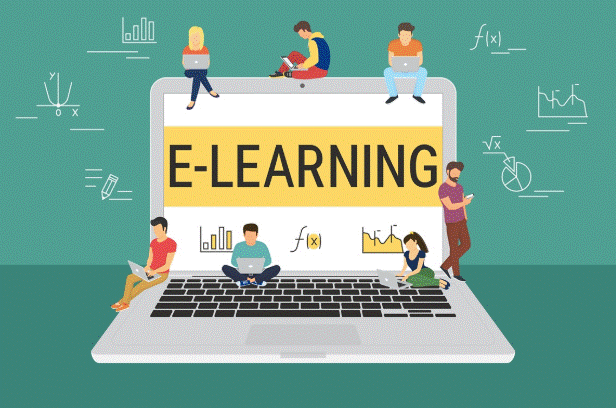The digital era has revolutionized education, with e-learning platforms at the forefront of this transformation. These platforms have opened the doors to global education, allowing individuals from different corners of the world to access knowledge. However, one significant barrier remains: language. Video translation has emerged as a game-changer, ensuring that e-learning content transcends linguistic boundaries. This article explores why video translation is indispensable for e-learning platforms and how tools like online video translators and free AI video apps are reshaping the learning experience.
Enhancing Accessibility and Inclusivity
Language diversity often creates challenges for learners who wish to access educational resources. E-learning platforms cater to audiences from different linguistic and cultural backgrounds, but without translation, many users may feel excluded. Video translation bridges this gap by making content accessible to non-native speakers.
Through tools such as online video translators, educators can seamlessly add subtitles or voiceovers in multiple languages, enabling inclusivity and empowering a global audience. This inclusivity promotes equal opportunities in education, ensuring that knowledge knows no linguistic boundaries.
Improving User Engagement and Comprehension
Learning becomes more effective when students can understand content in their native language. When videos are translated, learners can grasp concepts more easily, engage better, and retain information longer.
For example, a biology lesson delivered in English may be difficult for a non-native speaker to follow. Adding subtitles or translating the video into their language allows the student to focus on learning rather than decoding. By leveraging an online video translator, e-learning platforms enhance comprehension, ensuring learners can focus on understanding the subject matter rather than struggling with language barriers.
Streamlining Translation with AI Tools
AI-driven tools have revolutionized video translation, making the process faster, more accurate, and cost-effective. These tools utilize advanced algorithms to preserve context and meaning, ensuring the translation remains true to the original message.
A free AI video app can help educators and creators translate their videos effortlessly. These apps not only automate subtitle generation but also support features like voiceovers and customizable text overlays. This enables e-learning platforms to deliver high-quality, localized content without extensive technical expertise or significant time investment.
Cost-Effectiveness and Scalability
Traditional video translation methods involve hiring translators, voice actors, and video editors, which can be both time-consuming and expensive. AI-powered tools, on the other hand, automate most of these processes, significantly reducing costs.
Using an online video translator, e-learning providers can create multilingual content without draining their budgets. This cost-efficiency also makes it feasible to scale operations, translating more videos into additional languages as demand grows.
Fostering Cultural Relevance
Education is most effective when it is culturally relevant. Simply translating words is not enough; the content must reflect cultural nuances and preferences to resonate with the target audience. Advanced video translation tools can adapt materials to suit regional idioms, phrases, and cultural sensitivities, ensuring that the translated content feels natural and relatable.
For example, idiomatic expressions in one language might confuse learners from another culture if translated literally. AI-powered translators analyze context and provide culturally appropriate alternatives, enhancing the learning experience for a global audience.
Boosting Learning Outcomes
Translated videos do more than break language barriers; they enhance learning outcomes. When learners can study in their preferred language, they absorb information more effectively. Subtitles and voiceovers in native languages support vocabulary development, correct pronunciation, and overall language acquisition.
Additionally, visual and auditory reinforcement through translated video content makes lessons more engaging. This multimodal learning approach caters to different learning styles, ensuring learners achieve better results.
Expanding Market Reach
Multilingual content isn’t just an educational asset; it’s also a business strategy. Offering translated video lessons enables e-learning platforms to reach untapped markets. By providing courses in multiple languages, platforms can attract learners from different regions, significantly increasing their user base.
For instance, a platform initially focused on English-speaking users can expand to Spanish, French, or Mandarin-speaking markets by utilizing an online video translator. This strategy not only broadens the platform’s audience but also strengthens its reputation as a global educational leader.
E-Learning in Specialized Fields
In fields like medicine, engineering, or computer science, understanding technical terms and concepts is crucial. Video translation ensures learners from non-English-speaking regions can access specialized knowledge. AI tools can accurately translate complex terminology, maintaining the integrity of the content while making it accessible to all.
A free AI video app is particularly useful for professionals and students in specialized disciplines, enabling them to learn without language barriers.
The Role of Automation in Video Translation
Automation is at the heart of modern video translation. AI tools simplify workflows, offering features like automatic transcription, real-time subtitle generation, and voiceover translation. These capabilities allow educators and e-learning providers to produce high-quality translations quickly and efficiently.
For example, using an online video translator, a teacher can create multilingual subtitles for a lecture with just a few clicks. Automation not only saves time but also ensures consistency and accuracy across all translated materials.
Conclusion: A Necessity for Global Learning
Video translation is no longer an optional feature for e-learning platforms—it’s a necessity. By eliminating language barriers, these tools make education accessible, inclusive, and engaging for learners worldwide. They empower platforms to reach broader audiences, enhance learning outcomes, and foster cultural understanding.
With the help of advanced AI tools like free AI video apps and online video translators, e-learning platforms can revolutionize how education is delivered globally. As the demand for digital learning grows, video translation will continue to play a vital role in shaping the future of education.

